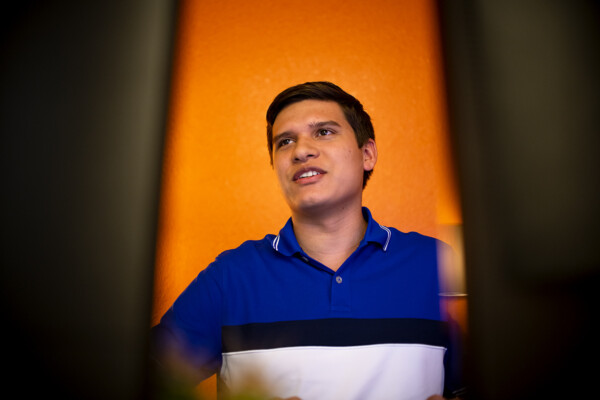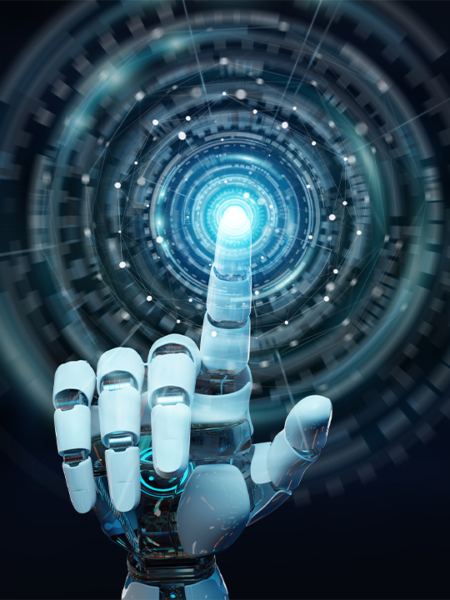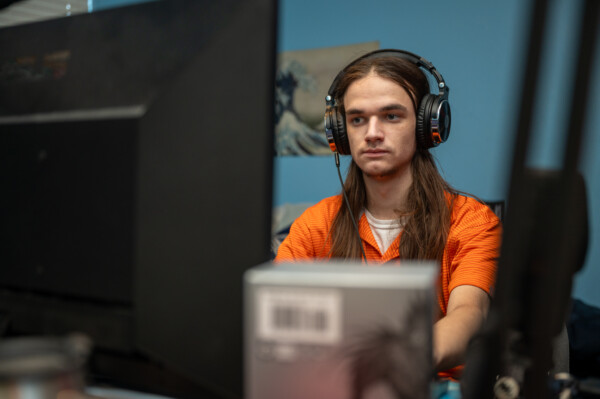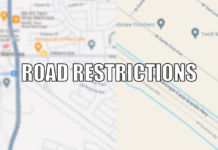One year ago, ChatGPT didn’t exist. Today, it’s a close friend to many.
But for students and teachers in Maricopa schools, the question is this: How close a friendship should that be?
For better or worse, ChatGPT and other artificial intelligence programs freely available online have stormed the walls of Maricopa schools.
Educators, administrators and students are harnessing the power and shouldering the dangers of AI as they reconcile the permanence of this new technology.
Students and teachers can lean into the new paradigm, using it to tailor instruction, write lesson plans and even complete entire assignments.
Forget-me-bot
Talitha Martin, a 12th grade English teacher at Maricopa High School, worries reliance on AI harms students’ critical thinking skills.
Naturally, she believes language is a crucial means of expression and exploration. When ChatGPT can write, rewrite and edit a document, it strips students of their learning experience.
“While adults may have more knowledge of their own voice in writing, students are still working out their understanding and command of language,” Martin said.
Introducing something so extreme during a phase characterized by learning from one’s mistakes is a tough pill to swallow.
“This is a time when their brains need to be focused on their own thoughts and expression,” Martin said of her pupils, “not just dumping pre-formed word clusters onto a page.”
Abusing chatbot output as a substitute for original thought also brings up ethical concerns, such as plagiarism and cheating.
Martin said she hopes to teach her students to evaluate and understand concepts in their own minds rather than test their “copy and paste” skills.
But just because students can doesn’t mean they will.
Maricopa High School senior Nicolas Yendrzeski pointed out there are other ways to cheat when doing assignments at home, on personal computers far away from the district’s restrictions. It’s nothing new — but that doesn’t make every student a likely cheater.
“It’s a whole different playing field at home,” Yendrzeski said. “But I don’t use it for school because I know that it’s frowned upon. I’d rather do my own work with my own name.”
Although he avoids chatbots in the classroom, he said they’re “fun to mess around with” in his free time.

The Maricopa Unified School District does not have a method to detect AI, but some teachers have already noticed its implementation.
Martin thinks it is easy to differentiate between original work and bot-written content, which is hallmarked with flowery language and long, droning sentences.
“If I have had time to get to know the students and their speaking and writing voice, it is very obvious when something comes in that is not their own,” Martin said. “I find it cold and somewhat callous to pass something off that you had no hand in actually writing.”
Josefina Nichols, a Desert Sunrise High School math teacher, agrees.
In a curriculum that revolves around complex equations and problem-solving, Nichols must push her students to show their work.
“If students choose AI for their work, it will be a disservice to themselves,” Nichols said.
If you can’t beat ‘em, join ‘em
Although Nichols said she understands the dangers of artificial intelligence, she also recognizes its dichotomy.
“AI can be used as a tool,” she conceded. “But it should not replace your lessons and activities. AI will not help students develop conceptual understanding and application.”
However, some administrators argue AI can assist with writing prompts and brainstorming, among other helpful applications.
Christine Dickinson, MUSD’s technology director, views AI as a tool to enhance understanding and believes it can be used as a “jumping-off point for students to build upon,” she said.
“There is a useful case for everything,” Dickinson said. “AI is no exception.”
Its potential is unlimited and constantly proliferating. And if used ethically, Dickinson believes it can help — no different than the dawn of calculators or internet search engines.
Yendrzeski sees it the same way.
“We already bounce ideas off of each other,” he said. “And AI can do it faster, with a deeper understanding.”
But despite possible benefits, most teachers seem to strictly discourage generative AI in the classroom. Especially when it is passed off as original and authentic.
“I dread the idea of a world where expertise, individual voice and authenticity become obsolete,” Martin said. “And I view AI as fast-tracking us to that place.”
Lesson plan B
Because it is free online, students have nearly unfettered access to AI. The notion of AI in classrooms likely conjures images of students typing away into the prompt box.
But what about the teachers?
Educators with booked and busy schedules could offer themselves some leeway if they use AI to streamline lesson planning or grade tests.
“Think of AI as a partner in a collaborative work session,” Dickinson said. “This partner has access to a wide range of resources and information that you may need and can offer suggestions and a different point of view.”
Rather than dedicating hours and their own money to put curriculums together, teachers have a new option.
Martin flirts with the idea, but it still does not sway her opinions.
“Instead, it makes me wish that teachers had more available time and creative space to turn their knowledge into effective lessons and materials,” she said.
The future of education?
Like the entry of computers and calculators to the classroom in previous decades, AI could simply end up supplementing existing infrastructure.

It’s unlikely AI will outright overhaul the framework of education, educators say, but they are still grappling with when to use it and when to refuse it.
Chatbots can provide data-driven insights, accessibility and enhanced efficiency.
“AI will allow for students to have a free tutor available to them at nearly all times,” Dickinson said. “The rapid advancement of these tools will provide breakthroughs for our learners.”
On the flip side, artificial intelligence can make kids dependent on tech, damper critical thinking and warp ethical perception.
Martin said she prefers a world where humans bounce ideas and inquiries off one other to generate new ideas. She and other teachers agree on one thing: AI should be approached cautiously.
“I won’t be leaning in anytime soon,” Martin said. “My plate is already full.”
Artificial intelligence has unfathomable potential. But one thing is certain: As technology continues to metastasize, educators and students alike will be among the first to feel its impact.
Alexa, what is artificial intelligence?
Artificial intelligence has seamlessly integrated itself into virtually every facet of modern life. It’s revolutionizing the way we interact with technology in a way most see as more significant than the birth of the internet.
Whether an Amazon Alexa device turns on the lights in your kitchen or Siri places a call on your iPhone, AI is all around.
It feels familiar because it simulates human intelligence. Computers can now make decisions, recognize patterns, solve problems and understand natural language.
Take ChatGPT for example; a chatbot that exploded into the mainstream after its launch just 10 months ago.
Unlike traditional AI systems designed for specific tasks — like when Alexa lets you know your chicken is done baking — generative AI creates brand new text, images and even music and video.
ChatGPT can compose emails, write essays and answer complex questions within seconds.
As new as it feels, artificial intelligence has loomed behind the scenes for years.
Streaming services like Netflix and Hulu use AI predictions to recommend shows and movies, while social platforms like Facebook and YouTube use AI to suggest and organize posts in your feed.
In 1958, early computer scientists H. A. Simon and Allen Newell predicted “a digital computer will be the world’s chess champion” and “a digital computer will discover and prove an important new mathematical theorem” within a decade.
It’s been 65 years, but they finally got it right.

A+ Charter School takes a different approach and faces the nascent technology head-on. The school integrates artificial intelligence into its curriculum.
The school introduced the Archer Intelligence Project this year, a high school elective class designed to help students take full advantage of burgeoning predictive text generators.
Dean of Academic Services Nate Wong said AI literacy is crucial in the modern world.
“We felt it was really important that we started having conversations about AI now,” Wong said, “so we can have live feedback from the kids.”
Wong said AI is a catalyst for critical thinking. It’s like having access to a round-the-clock tutor.
The new course hones students’ skills in prompt selection and language model training.
“If we don’t show them stuff like this, they’re going to get swallowed up,” Wong said. “We really want to help transition kids into the 21st century.”
And that concept extends to all in the classroom, he said. AI chatbots are new to teachers, too, providing an opportunity for students to watch the learning process.
“We would be doing kids a disservice, in our eyes, if we didn’t learn with them,” Wong said. “We’re not trying to teach them one way or the other; we’re trying to learn right along with them.”
Students and teachers alike embrace mistakes in the Archer Intelligence Program before the new tech inevitably advances. With a focus on ChatGPT, the school is transitioning from a traditional, rigid learning model to a more individualized, standards-based approach.
Students in the class simulate conversations with Abraham Lincoln, argue in mock trials and much more. In today’s technology-driven world, Wong said students learn differently — and teachers teach differently.
If his students understand an objective but can’t seem to put it into writing, Wong encourages them to utilize their artificial assistant. It even helps describe complex ideas using familiar references like Harry Potter, Mario and Pokémon.
“In five minutes, they can get five different perspectives that are relevant to things in their age group,” Wong said. “And that sparks engagement, communication and listening to their peers.”
So, while AI is a non-human aid, Wong says it’s a bridge to the future of human intelligence. He encourages staff and students to lean into artificial intelligence, knowing full well it won’t go away any time soon — if ever.
And the Archer Intelligence Program is one step forward in that regard. Wong doesn’t intend to leave his students behind.
“Technology is always going to be exponential,” he said. “This is going to grow into something else.”
This story was first published in the October edition of InMaricopa Magazine.









![City gave new manager big low-interest home loan City Manager Ben Bitter speaks during a Chamber of Commerce event at Global Water Resources on April 11, 2024. Bitter discussed the current state of economic development in Maricopa, as well as hinting at lowering property tax rates again. [Monica D. Spencer]](https://www.inmaricopa.com/wp-content/uploads/2024/04/spencer-041124-ben-bitter-chamber-property-taxes-web-218x150.jpg)


![Alleged car thief released without charges Phoenix police stop a stolen vehicle on April 20, 2024. [Facebook]](https://www.inmaricopa.com/wp-content/uploads/2024/04/IMG_5040-218x150.jpg)




